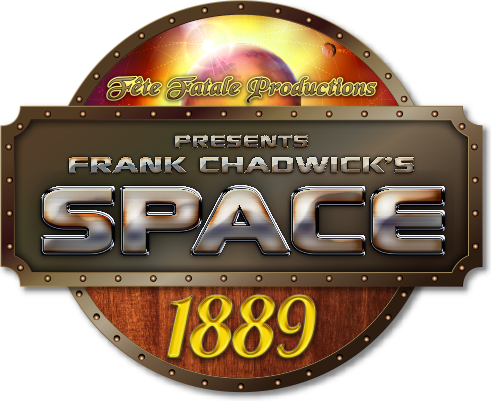The Other Planets

The Other Planets |
|
Shifting SandsPlayer Guide |
The Solar System:1889MercuryThe closest planet to the Sun has only just begun to be explored. Being tide-locked (and therefore not rotating), it is divided between the Day Zone, which always faces the Sun and is therefore uninhabitable because of its blistering heat, and the Night Zone, which always faces away from the Sun and is therefore uninhabitable because of its petrifying cold. In the thin Twilight Zone between these two regions, however, there is a temperate band where simple life flourishes along the Corealis River, a single massive river that runs all the way around the planet in this zone. The most highly developed life forms are similar to Terran fish and crabs, with no evidence of any sentient species. The British have established a small research station there, but nothing more. Mercury has revealed some interesting mineral deposits, including glow crystals, which have the capacity to convert solar energy to electricity. VenusThe Earth-size planet next to Mercury is a hothouse of shallow seas, steaming tropical jungles, bogs and marshes, and some more temperate upland plateaus, with a cloud canopy that blocks all view of the sky except for a diffused sunlight. Venus is characterized by frequent rainfall (which makes it very humid by Terran standards) and amazingly lush vegetation. Its main life-forms are mostly reptilian in nature, other than large numbers of insects. Venusian lizards resemble a variety of old Terran dinosaurs. Venus is also home to tribes of sentient lizard-men, most of whom maintain a hunter-gatherer lifestyle, although a few tribes have developed settled agriculture. The Germans have established a substantial settlement on Venus, and there are smaller British, Russian, Italian, and Japanese settlements. Liftwood breaks down rapidly in the Venusian atmosphere, making liftwood flyers useless and travel difficult As a result only the Germans, who employ Aether Zepplins in large numbers, can operate effectively on Venus. Venus’ key exports have thus far been largely botanical in natural; German pharmaceutical companies have discovered a number of plants with important medical uses, for example. Venusian orchids are in high demand among florists and gardeners, and Venusian lizard-skin leather is also sought after. Wealthy aristocrats have begun to keep some lizards as pets and occasionally even servants. LunaLuna has barely been explored. Unlike Mars, Venus, and Mercury, Earth's only satellite has no atmosphere, and thus both hydrogen dirigibles and liftwood flyers are ineffective here. It is possible to use an Aether propeller to operate on Luna, but virtually all Aether propellers are designed for long distance travel, not the delicate maneuvering of meters; as a result, only a handful of skilled Aether pilots have successfully landed on Luna and returned to tell the tale. A few expeditions have surveyed Luna and come to the conclusion that it has no water, no life forms, and no identifiable mineral wealth. As a result, there is no Terran settlement on Luna and it appears to have no commercial value whatsoever. MarsThe planet beyond Earth used to possess seas 50 million years ago, but climate change led to the oceans drying up and their water either becoming trapped in the polar icecaps or chemically binding with the desert sands. To compensate, the Martians developed a complex network of canals designed to channel the flow of water from the ice caps down to the settled sea beds and upland regions, allowing for agriculture. Martians are divided into three major groups: Canal Martians (the most civilized and physically evolved), Hill Martians (physically similar to Canal Martians but with a more primitive culture), and High Martians (who retain the ability to fly but possess a much less advanced culture). The Asteroid BeltBeyond Mars lies the Asteroid Belt. Russian and British astronomers believe that the Belt is the remains of a lost planet, dubbed Phaeton, which disintegrated millennia ago, leaving behind only large rocks drifting through the Aether. There have been discussions of sending archaeological and geological expeditions to the Asteroid Belt, but none have yet been undertaken. Travel beyond the Asteroid BeltIs currently impossible. Because Aether Ships and Zeppelins are driven by solar-powered steam boilers, travel further out into the solar system has run into the obstacle that there is not enough sunlight beyond the Asteroid Belt to power solar boilers. Coal furnaces would quickly consume all the available oxygen on the vessel. But perhaps some enterprising inventor will discover a way around this limit and discover what secrets the Outer Solar System holds. |